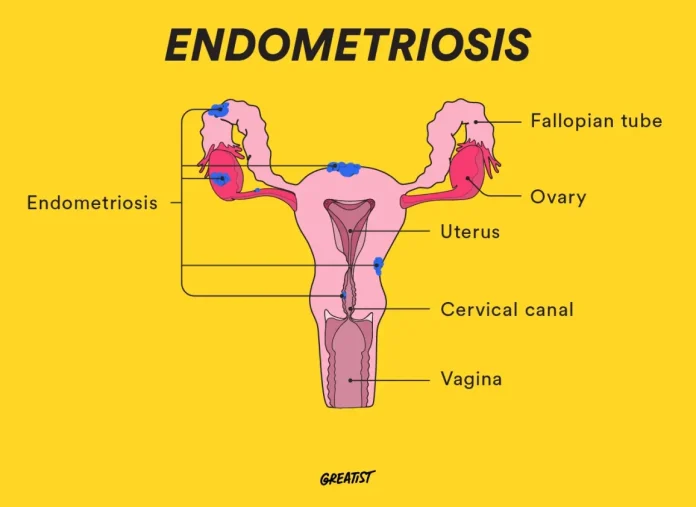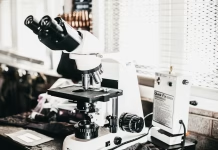Endometriosis is a disease that has an impact on women’s reproductive systems. Millions of women worldwide are impacted by this condition. It happens when the endometrium, the tissue that normally lines the uterus, grows elsewhere, most frequently on the ovaries, fallopian tubes, and other pelvic organs.
According to the Office on Women’s Health, endometriosis is a condition in which tissue similar to the lining of a woman’s uterus (womb) grows outside of the uterus.
Endometriosis Awareness Month was established in 1993 by the Endometriosis Association. It is now celebrated around the world through activities such as education, fundraising, and marches.
March is recognized as Endometriosis Awareness Month. Regardless of social status or ethnicity, one in ten women worldwide suffers from endometriosis. Uterine tissue grows outside of the uterus as a result of this condition. The ovaries, fallopian tubes, and pelvis are the main sites where the tissue develops. Trapped tissue can cause infertility, severe bleeding, and pelvic pain.
Approximately one in ten women in the United States and 200 million women worldwide suffer from endometriosis. According to the Endometriosis Foundation of America, the condition is frequently misdiagnosed or never discovered. Endometriosis goes undiagnosed in part due to a lack of knowledge and awareness among the general public.
The goal of this article is to raise awareness of this condition, which is easily overlooked but has a serious impact on the health of many women worldwide, in the year 2023, especially among doctors and women.
Causes of Endometriosis.
The precise cause of endometriosis is unknown, just like that of fibroid tumors. Endometriosis is thought to have a variety of causes that contribute to its emergence, though. The present theories are:
Endometrial cells are rich in menstrual blood and surge back toward the fallopian tubes and into the pelvis, where they are deposited outside of the uterus. And after that, the cells grow and implant. This is known as retrograde menstruation.
Cellular metaplasia refers to the transformation of cells into endometrial-like cells outside of the uterus.
Through the lymphatic and blood systems, stem cells disperse endometrial cells throughout the body.
It is believed that several additional factors contribute to the emergence and expansion of endometriosis lesions. Such as:
Genetics
Endometriosis is more likely to affect women who have a family history of the disease.
Hormones
Hormones contribute to the development of endometriosis. Endometrial tissue may grow outside the uterus when estrogen, the female sex hormone, is present.
environmental factors
Endometriosis can develop as a result of environmental factors as well. A higher risk of developing the condition may result from exposure to specific chemicals, such as dioxins.
Diet
Endometriosis development may be negatively affected by a woman’s diet. Women who consume diets that are heavy in red meat and light on fruits and vegetables.
Estrogen
Estrogen overproduction may also contribute to the emergence of this condition. Estrogen can cause endometriosis-related pain, swelling, and inflammation. Endometriosis, however, can still exist without too much estrogen.
Symptoms of Endometriosis
In addition to chronic fatigue, bleeding, and pain between periods, endometriosis can cause painful urination or bowel movements. Other conditions that share these symptoms can be mistaken for other uterine disorders. To confirm a diagnosis, imaging studies or a standard pelvic exam are required.
Infertility is a common side effect of endometriosis. Your fertility may be impacted by endometriosis in several ways. Such as
- Uterine adhesions prevent successful embryo implantation.
- Changes in hormone and cell function
- Fallopian tube obstruction
- Ovaries that are stagnant due to contractures to the pelvic lining or one another
- Having scars on one’s pelvis, ovaries, or fallopian tubes
Endometriosis can be misdiagnosed because it exhibits symptoms that are similar to uterine fibroids. Many people who have endometriosis or fibroids mistakenly believe that their symptoms are simply a result of PMS and regular menstruation. Unfortunately, this notion might make women put off getting treatment for years. According to a recent study by the Endometriosis Foundation of America, patients typically have to wait eight to ten years for a diagnosis.
Treatments for Endometriosis
A woman’s social, personal, and future life can all be impacted by living with endometriosis daily. Hormonal treatments, such as progestin therapy, birth control, or aromatase inhibitors, are prescribed when the symptoms become intolerable. These treatments do not treat disease. Only while the patient is receiving treatment do they work. Your doctor might also advise having the endometrial tissue surgically removed.
How to prevent endometriosis
You can lower your risk of developing endometriosis and prevent it from getting worse by carrying out these actions.
Maintain an active and healthy lifestyle.
If you take care of your diet, exercise frequently, and manage stress, you’ll be less likely to develop endometriosis. Additionally, refraining from smoking and consuming alcohol in moderation can lower your risk.
Monitor your menstrual cycle.
Keep a record of your cycle and pay attention to any potential changes. Consult your doctor if your menstrual cycle changes in any way, such as if you experience severe pain or heavy bleeding.
Use hormonal birth control.
By lowering the body’s estrogen levels, which can help slow the development of endometrial tissue, hormonal birth control can help lower the risk of developing endometriosis. Consult your doctor to find out if hormonal birth control is appropriate for you.













